Paweł Sroka
Enhancing V2X Communications with UAV-mounted Reconfigurable Intelligent Surfaces
Mar 24, 2025Abstract:This paper addresses the crucial need for reliable wireless communication in vehicular networks, particularly vital for the safety and efficacy of (semi-)autonomous driving amid increasing traffic. We explore the use of Reconfigurable Intelligent Surfaces (RISes) mounted on Drone Relay Stations (DRS) to enhance communication reliability. Our study formulates an optimization problem to pinpoint the optimal location and orientation of the DRS, thereby creating an additional propagation path for vehicle-to-everything (V2X) communications. We introduce a heuristic approach that combines trajectory optimization for DRS positioning and a Q-learning scheme for RIS orientation. Our results not only confirm the convergence of the Q-learning algorithm but also demonstrate significant communication improvements achieved by integrating a DRS into V2X networks.
* The contribution of the paper was presented during the 22nd IEEE International Conference on Pervasive Computing and Communications Workshops and other Affiliated Events, PerCom Workshops 2024 by the IEEE
Distributed Vehicular Dynamic Spectrum Access for Platooning Environments
Mar 22, 2022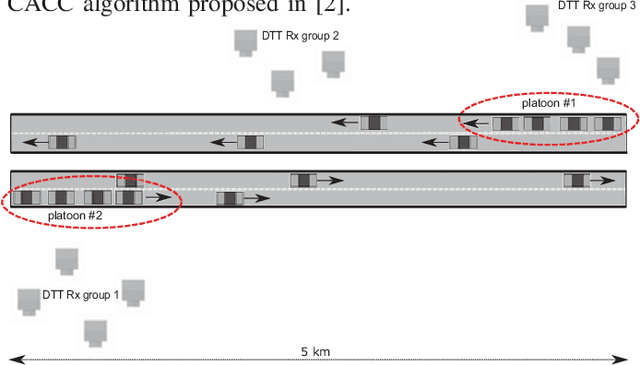
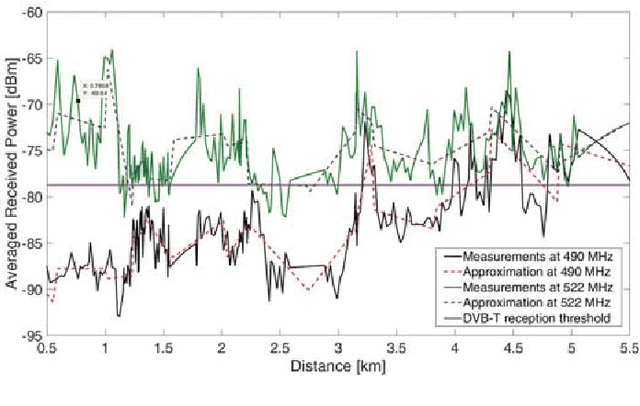
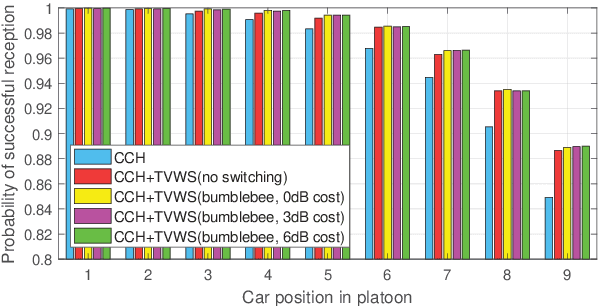
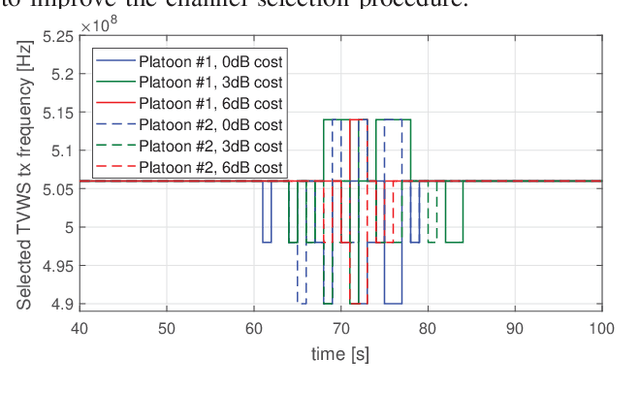
Abstract:In this paper, we propose a distributed Vehicular Dynamic Spectrum Access (VDSA) framework for vehicles operating in platoon formations. Given the potential for significant congestion in licensed frequency bands for vehicular applications such as 5.9 GHz. Our approach proposes to offload part of the intra-platoon data traffic to spectral white-spaces in order to enhance vehicular connectivity in support of on-road operations. To enable VDSA, a Bumblebee-based decision making process is employed which is based on the behavioral models of animals, is employed to provide a means of distributed transmission band selection. Simulation results show the distributed VDSA framework improves the leader packets reception ratio by 5%, thus indicating its potential to increase in reliability of intra-platoon communications.
The Impact of Blocking Cars on Pathloss Within a Platoon: Measurements for 26 GHz Band
Oct 06, 2021



Abstract:Platooning is considered to be one of the possible prospective implementations of the autonomous driving concept, where the train-of-cars moves together following the platoon leader's commands. However, the practical realization of this scheme assumes the use of reliable communications between platoon members. In this paper, the results of the measurement experiment have been presented showing the impact of the blocking cars on the signal attenuation. The tests have been carried out for the high-frequency band, i.e. for 26.555 GHz. It has been observed that on one hand side, the attenuation can reach even tens of dB for 2 or 3 blocking cars, but in some locations, the impact of a two-ray propagation mitigates the presence of obstructing vehicles.
Dynamic Power and Frequency Allocation Scheme for Autonomous Platooning
Jul 27, 2021


Abstract:In this paper, we consider the use of radio environment maps (REMs) in vehicular dynamic spectrum access (VDSA) for vehicle platooning applications. We propose an algorithm that dynamically allocates the frequency bands and transmission power in the so-called TV white spaces (TVWS) for intra-platoon messaging, intending to maximize the reliability of the communications, simultaneously keeping the interference to the primary system below the required threshold. The proposed solution is evaluated in simulations, with the results indicating a significant increase in communications reliability with VDSA.
* 6 pages, 3 figures
6G White Paper on Edge Intelligence
Apr 30, 2020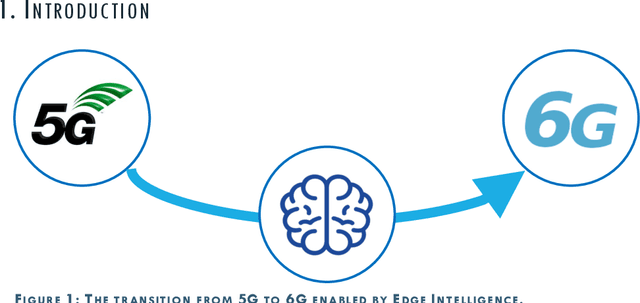

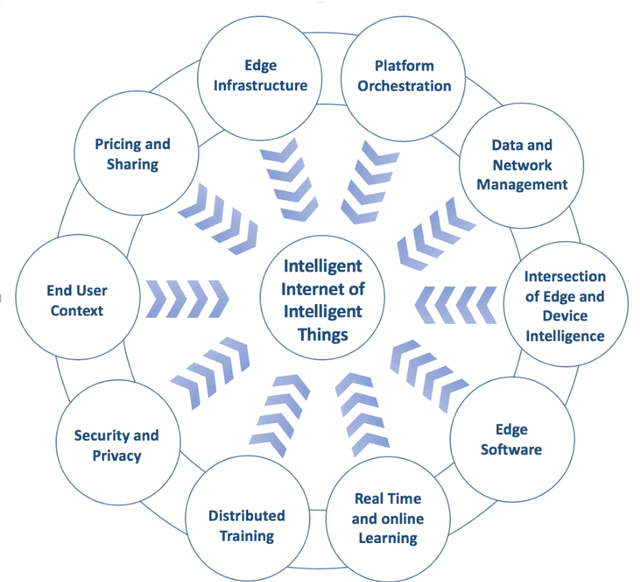
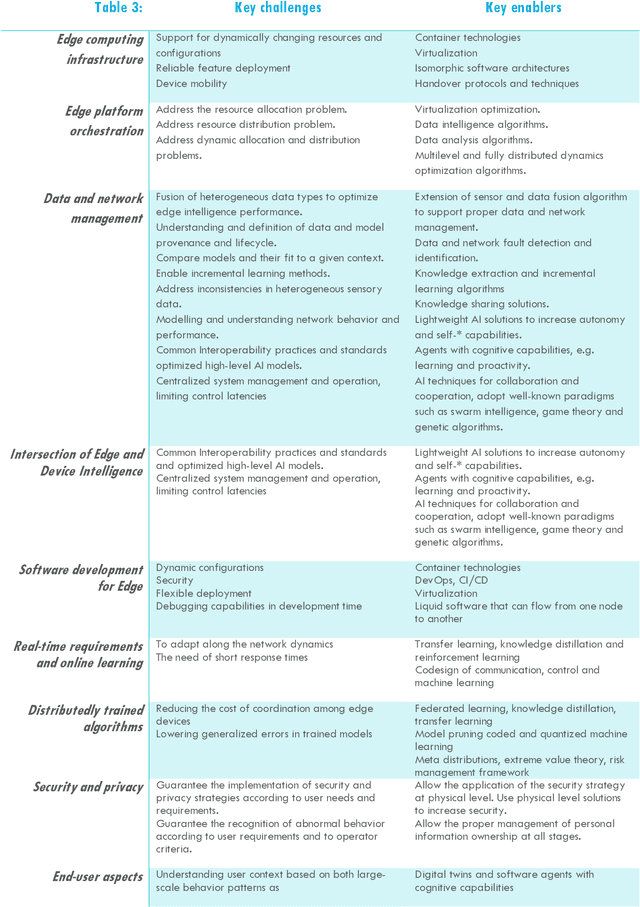
Abstract:In this white paper we provide a vision for 6G Edge Intelligence. Moving towards 5G and beyond the future 6G networks, intelligent solutions utilizing data-driven machine learning and artificial intelligence become crucial for several real-world applications including but not limited to, more efficient manufacturing, novel personal smart device environments and experiences, urban computing and autonomous traffic settings. We present edge computing along with other 6G enablers as a key component to establish the future 2030 intelligent Internet technologies as shown in this series of 6G White Papers. In this white paper, we focus in the domains of edge computing infrastructure and platforms, data and edge network management, software development for edge, and real-time and distributed training of ML/AI algorithms, along with security, privacy, pricing, and end-user aspects. We discuss the key enablers and challenges and identify the key research questions for the development of the Intelligent Edge services. As a main outcome of this white paper, we envision a transition from Internet of Things to Intelligent Internet of Intelligent Things and provide a roadmap for development of 6G Intelligent Edge.
 Add to Chrome
Add to Chrome Add to Firefox
Add to Firefox Add to Edge
Add to Edge